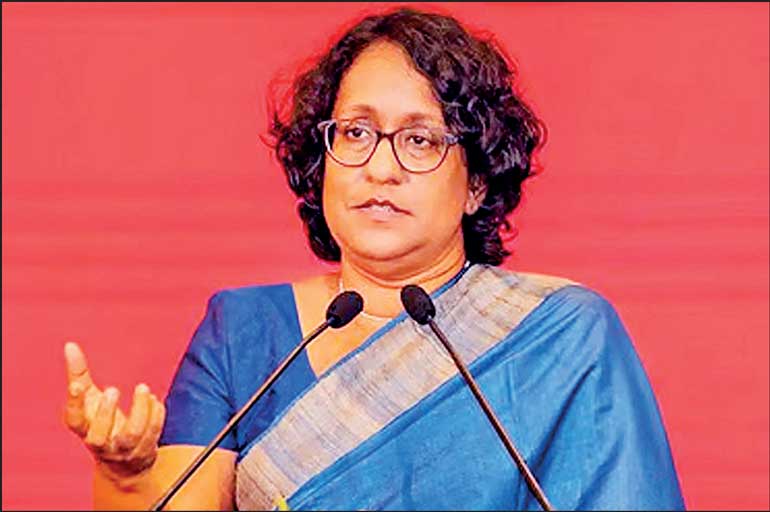Friday Apr 18, 2025
Friday Apr 18, 2025
Friday, 27 September 2024 00:26 - - {{hitsCtrl.values.hits}}

Prime Minister Dr. Harini Amarasuriya
 Now we are witnessing some changes in the socio-economic context in Sri Lanka. There is a need for better integration of all sectors with proper alignment focusing on the advancement of our nation. In this context, the education sector is really important and there should be a serious discussion between all stakeholders in primary, secondary and tertiary education in Sri Lanka to decide the future landscape of Sri Lankan education.
Now we are witnessing some changes in the socio-economic context in Sri Lanka. There is a need for better integration of all sectors with proper alignment focusing on the advancement of our nation. In this context, the education sector is really important and there should be a serious discussion between all stakeholders in primary, secondary and tertiary education in Sri Lanka to decide the future landscape of Sri Lankan education.
In Sri Lanka today, it’s not uncommon to see a student weighing 24 kilos carrying a schoolbag that weighs 10 kilos! I consider this as one measurement to indicate the disaster of our education system. Most of the children coming under the category of grade six to 10 have around eight subjects per day questioning whether Sri Lankan educationists have done the justice for our next generation (which we need to discuss in a separate article).
In India, the Ministry of Human Resource Development (HRD) prescribed the weight limit of school bags for each class last year. Accordingly, the weight of school bags for students of classes one and two should not exceed 1.5 kg, while the school bag of students of class three to five should weigh between 2 kg to 3 kg. The school bag of students of classes six and seven should not be more than 4 kg, while the weight of school bags of classes eight and nine students should not be above 4.5 kg. The school bag of a class 10 student should not weigh above 5 kg.
It can be observed that a grade seven student in Sri Lanka is bringing more than 200% of the stipulated weight limit which would lead to many ergonomic problems. A report of the US Consumer Product Safety Commission published that over 22,000 students suffer back pain related injuries in the year 2013 (Khan, 2018). Majority of them carry as much as 25% of their body weight.
A study in Al-Ahsa, Saudi Arabia, reveals that 1,860 (around 73%) of the students among 2,567 students carry bags that weigh more than 15% of their body weight and back pain was reported by 42% of the students. In India, the burden of satchels, as estimated in some of the Telangana districts, weighs about 6 to 12 kg at the primary level and 12 to 17 kg at the high school level (Khan, 2018). In Sri Lanka, it can be suggested to have a proper study on this to investigate the gravity of the problem with a weight limit of school bags.
There is a grave need for the revised education system for Sri Lanka in terms of many aspects. But in this article, I would like to emphasise on ‘quantity vs. quality’ of the education system of the country. Weightage of the bag is something related to ‘quantity’ which we need to revisit while improving the ‘quality’. By considering the current national issue of security we need to have short-term measurements such as reducing the number of subjects per day in the school time table which is easy for people to search. Nevertheless, the same short-term measurement should be adopted in the long run with the help of policymakers.
(The writer is a Professor in Management Studies, Faculty of Management Studies, at Open University of Sri Lanka.)